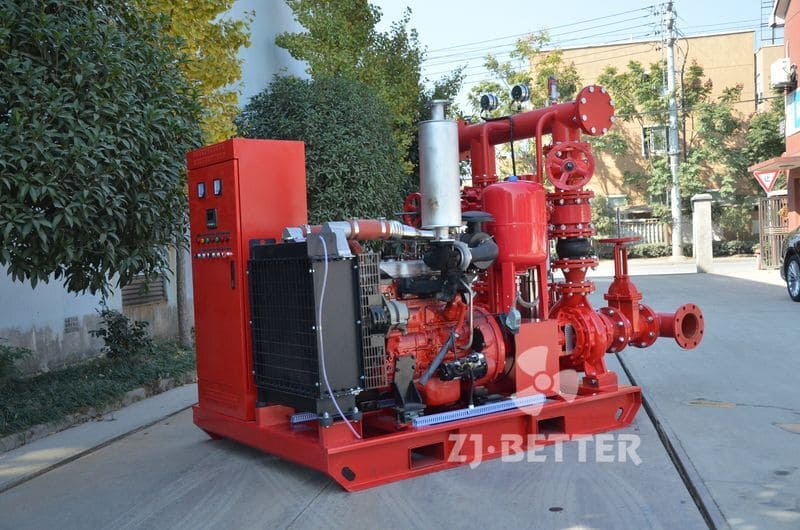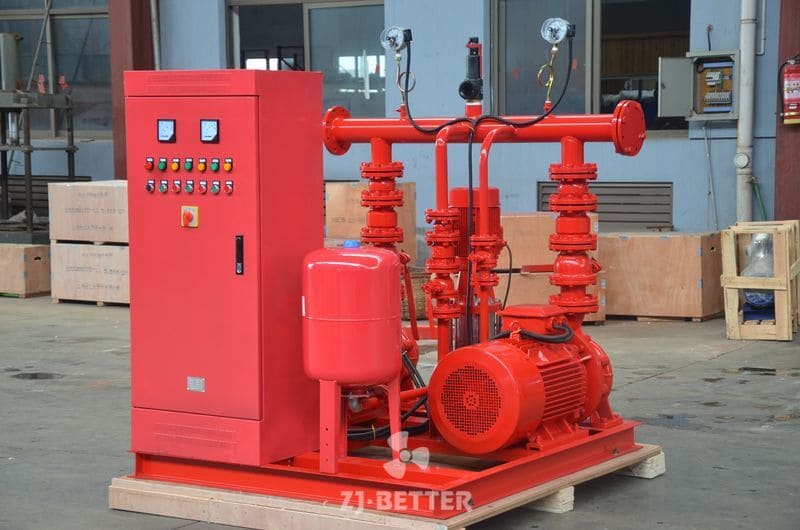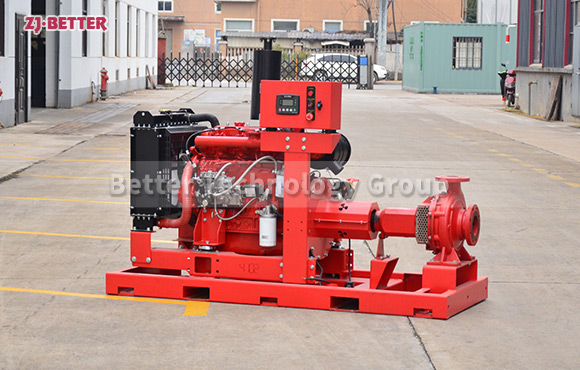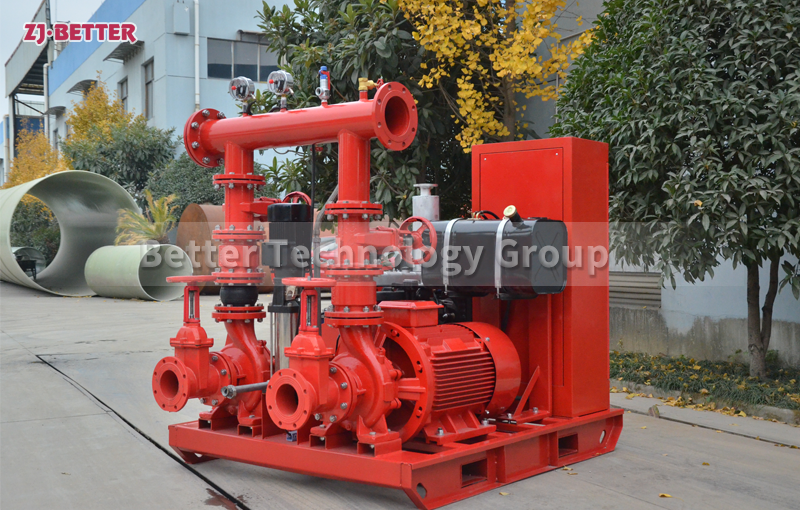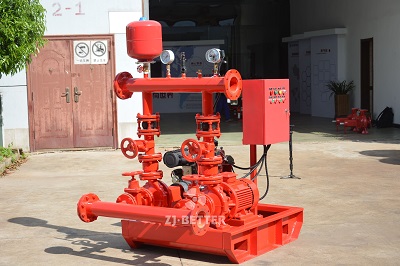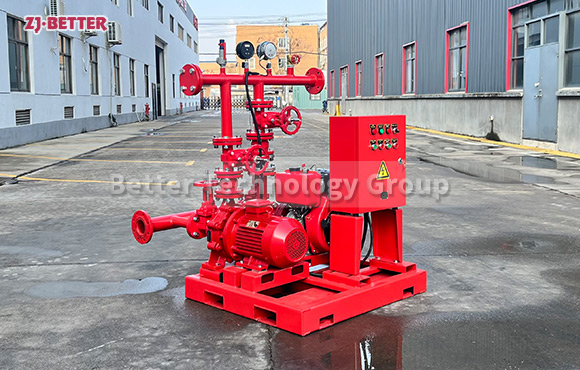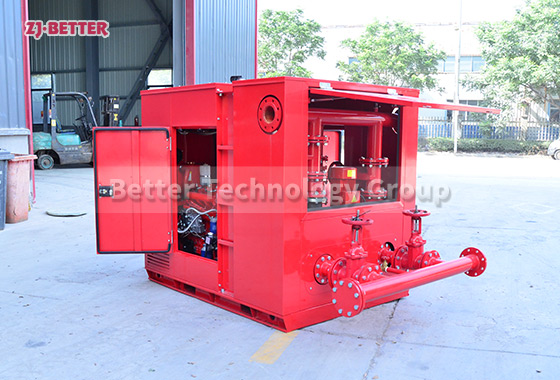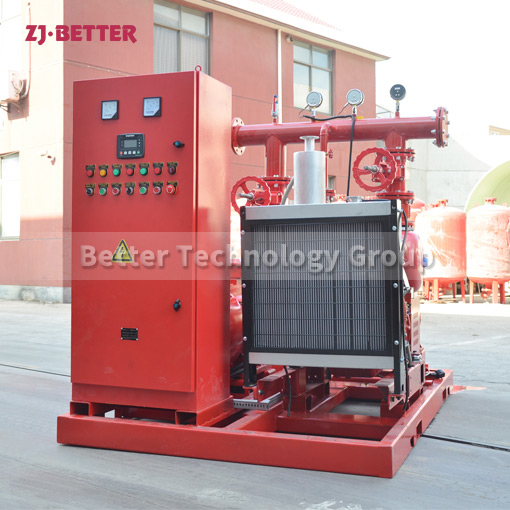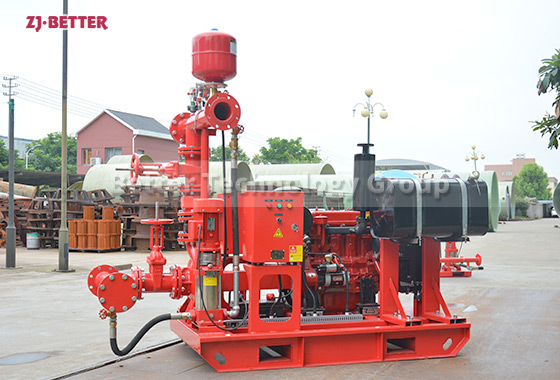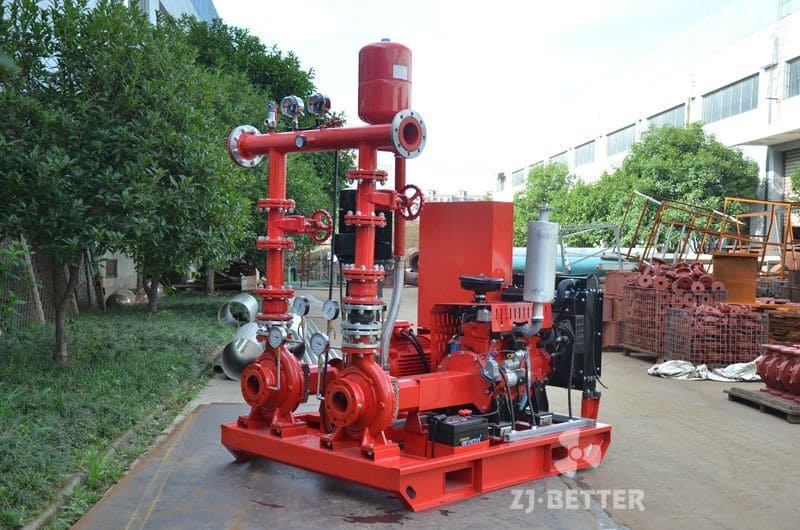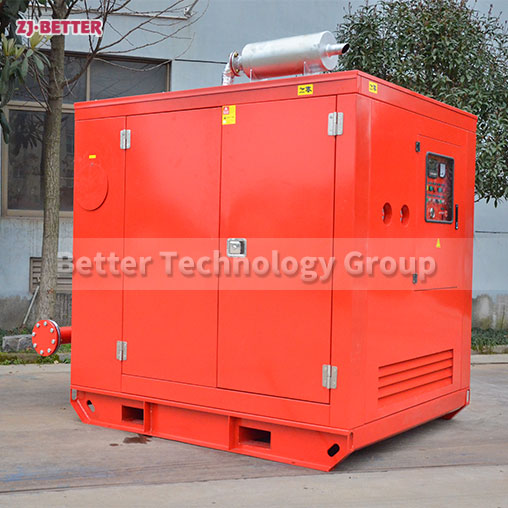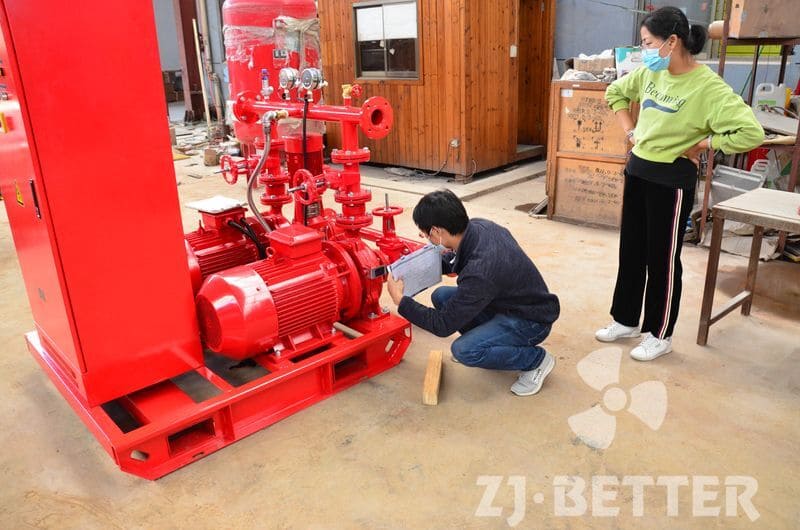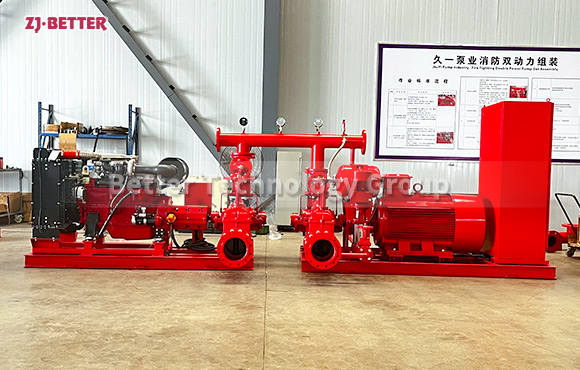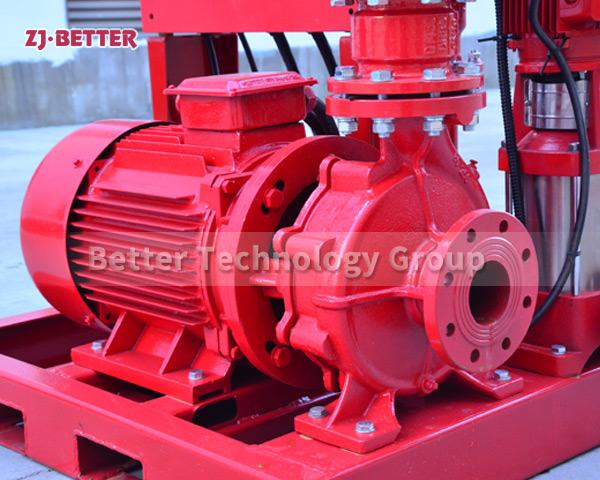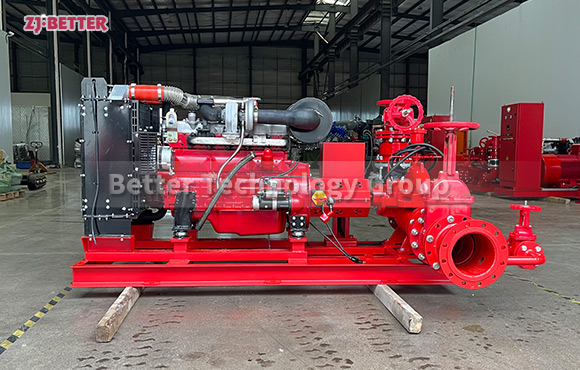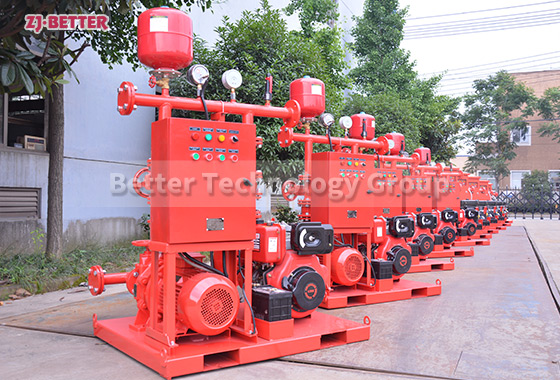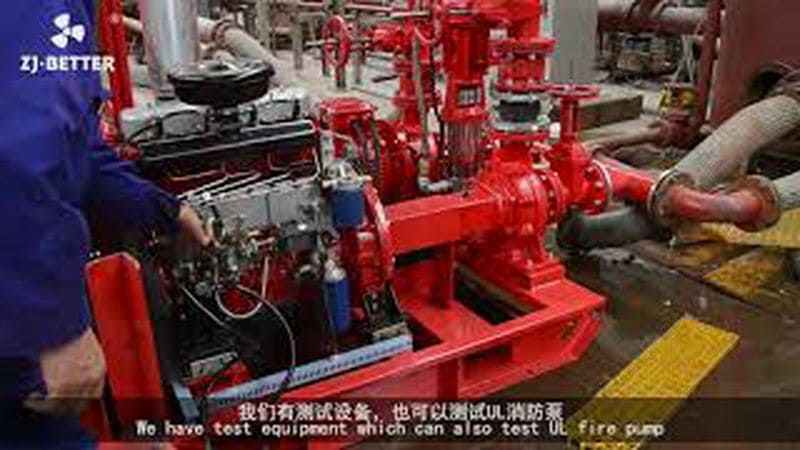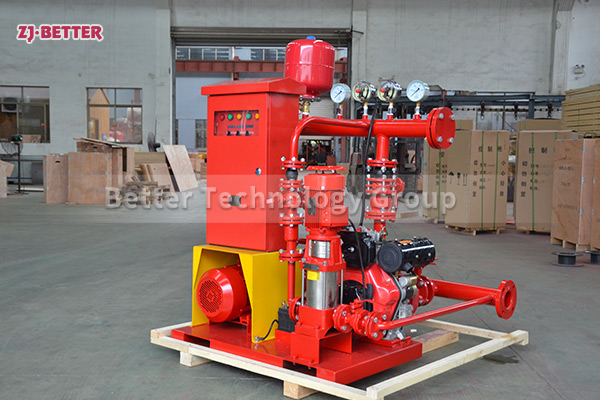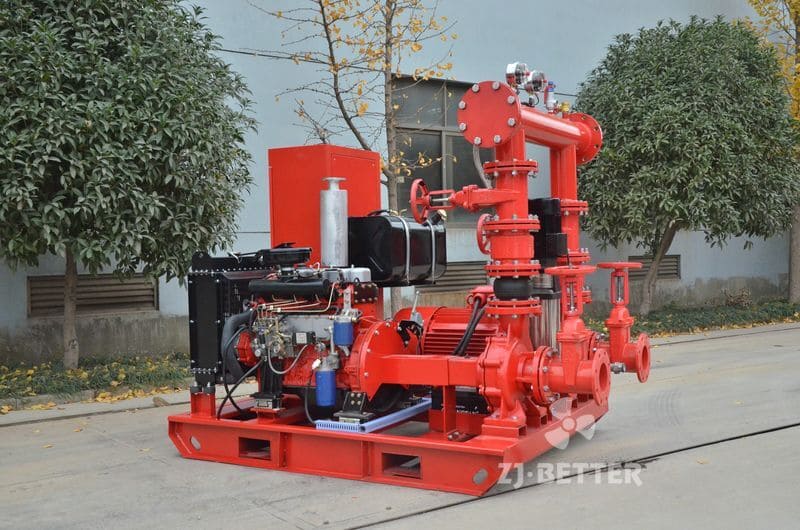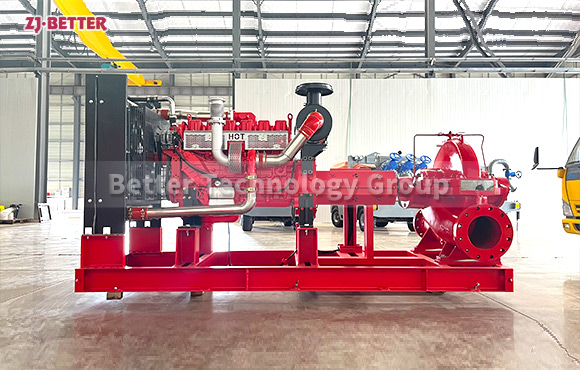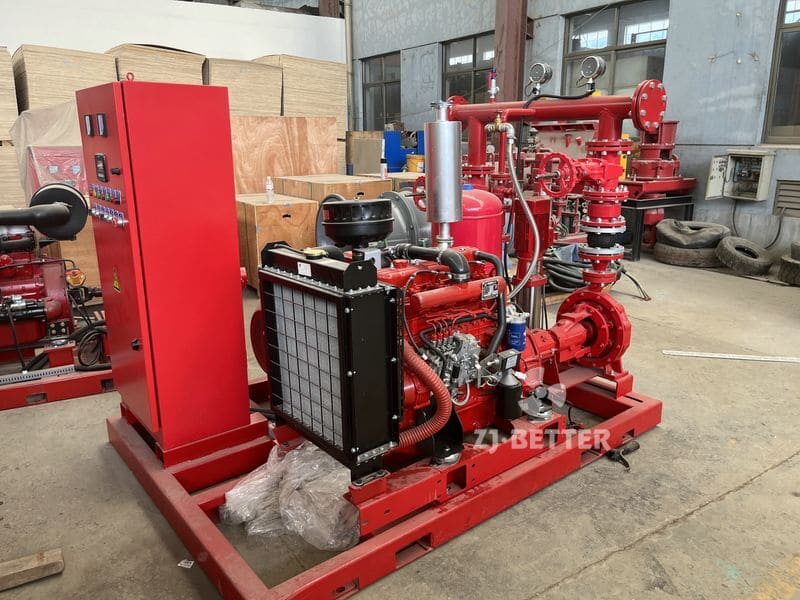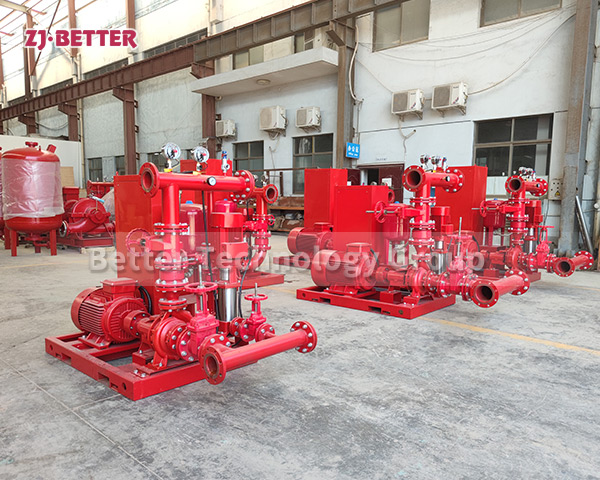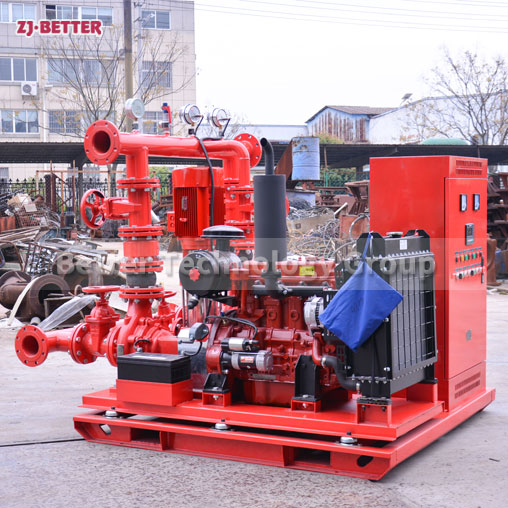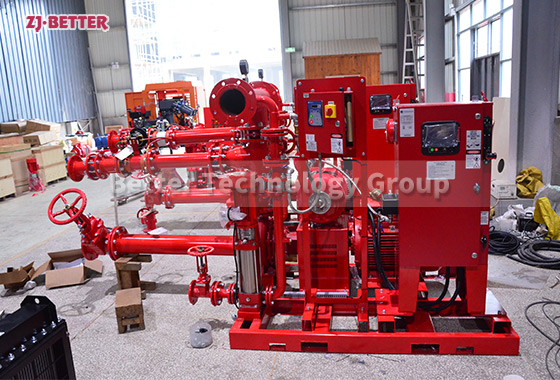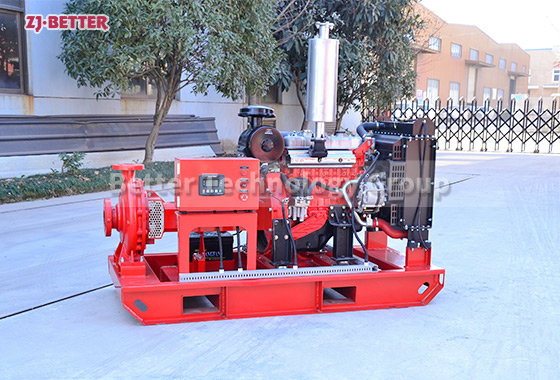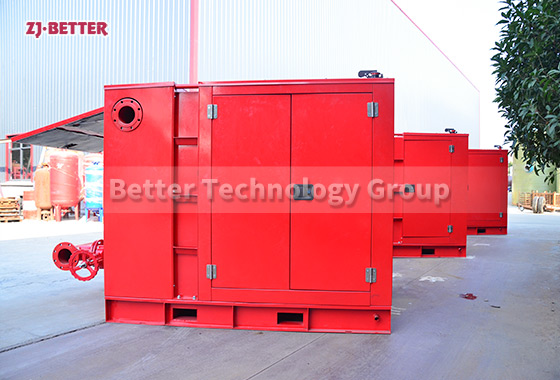Standard EDJ Fire Pump Set
The standard complete set of fire pump is manufactured with good structure and craftsmanship, which has a wide range of performance, and is easy to use and operate for a long time. Standard complete sets of fire pumps are aimed at various fire water environments, so the selection should also be based on the actual demand environment, performance parameters, etc.
Fire pumps are mainly used to transport water or other liquid fire extinguishing agents. It has high efficiency in transporting liquids. Fire-fighting projects are often equipped with some fire-fighting equipment. The pumping equipment has a great role in pumping and conveying water.
Fire pump: can be divided into two ways, namely automatic start and manual start.
1. Automatic start: When there is a fire danger, we can directly smash the “fire hydrant alarm box” on the floor to give an alarm. At this time, the relevant linkage cabinet will send out a sound and light alarm, so that the fire pump will start again.
2. Manual start: It is also very simple in operation. We need to select the “manual” position on the fire pump control cabinet, and then press the button.

